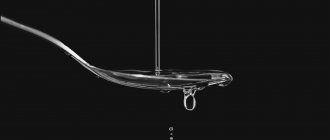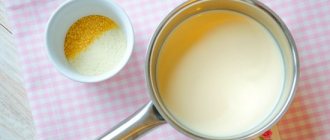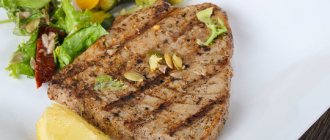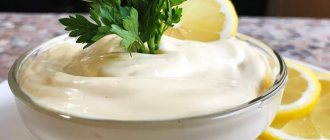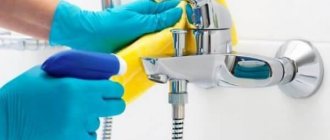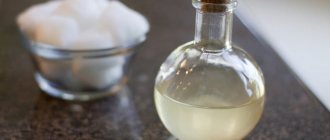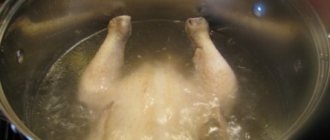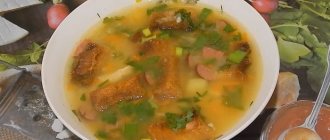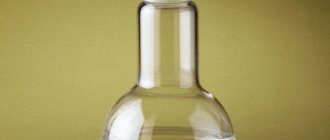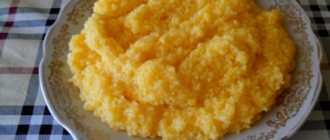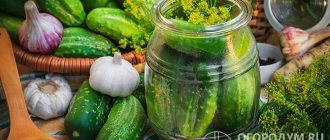How much vinegar in a tablespoon and a teaspoon
Vinegar or vinegar essence often appears in culinary recipes. This ingredient is most often found in recipes for canning vegetables for the winter. Vinegar is used not only for canning. Vinegar is also used in other recipes. For example: when cooking borscht, add a spoonful of vinegar so that the beets do not lose their bright red color. Apple cider vinegar is used for salads or marinades. For example, you can cook delicious pork kebab, etc. Usually the amount of vinegar is measured in spoons, grams and milliliters (ml). In this article we will look at the question of how much vinegar is in a spoon. Since there are different types of spoons, we will review the table spoon, tea spoon and dessert spoon. Before you write down the measuring chart “how much vinegar is in a tablespoon and a teaspoon,” you need to understand the strength of the vinegar. There are three concepts.
- Acetic acid (this is the strongest thing that can be) Acetic acid is usually used as a concentrate to make vinegar essence and table vinegar. Everything is very easily diluted with plain water.
- Acetic essence can be 70-80%, which means that the solution contains 70% or 80% acetic acid. The remaining 30% or 20% is ordinary water.
- Table vinegar This table vinegar is simply called vinegar. This is a solution of acetic acid in which there is only 3% to 15% , the rest is water.
Algorithm for calculating other volumes and weights of vinegar
From the school chemistry course we know that 1 ml, 1 gram and 1 cubic meter. ml of water are equal in weight and volume. The density of vinegar is close in value to that of water, so it is generally accepted that the number of grams and milliliters when measuring the E260 food additive will be the same. As a result, the answer to the question, 50 ml or 50 grams of vinegar is how many tablespoons, contains an equal number of full containers and partially filled ones.
In order to strictly observe the proportions of the popular seasoning for any culinary dish, you can use the table. The desired volume of seasoning (left column of the table) can be obtained by combining the values from the central column, indicating the number of full tablespoons, and the data from the right column, reflecting the number of teaspoons.
How many ml are in a tablespoon of vinegar? How much is a teaspoon of vinegar? 50 grams and 100 ml of vinegar are how many tablespoons? Often in culinary recipes, especially ingredients for canning vegetables for the winter, the authors of the recipes include a preservative - vinegar or essence (acetic).
Vinegar, as a rule, is available in every home, but not all housewives know how to quickly and without scales at home measure the required mass of vinegar in grams, volume in milliliters using tablespoons, teaspoons and an ordinary dessert spoon.
Today you can buy vinegar essence 70-80% and table vinegar with the most popular percentage of acetic acid: 3%, 6%, 9%. The weakest vinegar is 3% and 6%; dressings for vegetable salads are prepared from these two types.
Advice from the Wonder Chef. 9% (percentage) table vinegar is considered stronger in terms of acetic acid concentration; it is this or vinegar essence that is used for home preservation and preparation of marinades.
So, how much vinegar is contained in a tablespoon, teaspoon , or dessert spoon? Before calculating how much vinegar can be contained in spoons of various sizes, you need to understand what acetic acid, essence and vinegar itself are. What is the difference between acid and essence, is there a difference between acetic acid and acetic essence. Many people think that these two liquids are the same substance, but is this actually true?
Delicious recipe! Apple pie with rice flour
How many grams (ml.) of vinegar in a spoon
| Types of spoons | Amount of vinegar (table vinegar, vinegar essence, acetic acid) |
| In a tablespoon | 15 grams (ml.) |
| In a teaspoon | 5 grams (ml.) |
| In a dessert spoon | 10 grams (ml.) |
A tablespoon contains vinegar
One tablespoon holds 15 ml or 15 grams of vinegar
Dessert spoon contains vinegar
One dessert spoon holds 10 ml or 10 grams of vinegar
A teaspoon contains vinegar
A teaspoon holds 5 ml or 5 grams of vinegar
Measuring table of vinegar in grams and milliliters “How much vinegar in a tablespoon and a teaspoon”
| How many tablespoons is this? | tablespoons | dessert spoons | teaspoons |
| 200 grams (ml.) vinegar | 13 | 1 | |
| 200 grams (ml.) vinegar | 20 | ||
| 150 grams (ml.) vinegar | 10 | ||
| 150 grams (ml.) vinegar | 15 | ||
| 100 grams (ml.) vinegar | 6 | 1 | |
| 100 grams (ml.) vinegar | 6 | 2 | |
| 100 grams (ml.) vinegar | 10 | ||
| 100 grams (ml.) vinegar | 20 | ||
| 90 grams (ml.) vinegar | 6 | ||
| 80 grams (ml.) vinegar | 5 | 1 | |
| 75 grams (ml.) vinegar | 5 | ||
| 70 grams (ml.) vinegar | 4 | 2 | |
| 70 grams (ml.) vinegar | 4 | 1 | |
| 65 grams (ml.) vinegar | 4 | 1 | |
| 60 grams (ml.) vinegar | 4 | ||
| 50 grams (ml.) vinegar | 3 | 1 | |
| 45 grams (ml.) vinegar | 3 | ||
| 40 grams (ml.) vinegar | 2 | 2 | |
| 40 grams (ml.) vinegar | 4 | ||
| 40 grams (ml.) vinegar | 8 | ||
| 35 grams (ml.) vinegar | 2 | 1 | |
| 30 grams (ml.) vinegar | 2 | ||
| 30 grams (ml.) vinegar | 3 | ||
| 30 grams (ml.) vinegar | 6 | ||
| 25 grams (ml.) vinegar | 5 | ||
| 20 grams (ml.) vinegar | 1 | 1 | |
| 20 grams (ml.) vinegar | 2 | ||
| 20 grams (ml.) vinegar | 4 | ||
| 15 grams (ml.) vinegar | 1 | ||
| 10 grams (ml.) vinegar | 1 | ||
| 5 grams (ml.) vinegar | 1 |
Most often you can find table vinegar or just vinegar in stores. The most popular of them are 3% , 6% and 9% . Three and six percent vinegar is most often used for salads. Nine percent ( 9% ) vinegar is usually used for marinades.
If you liked our vinegar measurement chart, please check out our most comprehensive food measurement chart.
A spoon of vinegar how many ml.
1 tablespoon vinegar. A tablespoon holds 15 ml of vinegar: table vinegar, vinegar essence, acetic acid.
1 dessert spoon of vinegar. A dessert spoon holds 10 ml of vinegar: table vinegar, vinegar essence, acetic acid.
1 teaspoon vinegar. A teaspoon holds 5 ml of vinegar: table vinegar, vinegar essence, acetic acid.
Answers to popular questions, volume of vinegar in ml.
- 10 ml of vinegar is how many tablespoons? 10 milliliters of vinegar = 2/3 tablespoons = 1 dessert spoon of vinegar = 2 teaspoons.
- 20 ml of vinegar is how many tablespoons? 20 milliliters of vinegar = 1 tablespoon + 1 teaspoon of vinegar essence.
- 25 ml of vinegar is how many tablespoons? 25 milliliters of vinegar = 1 tablespoon + 2 teaspoons.
- 30 ml of vinegar is how many tablespoons? 30 milliliters of vinegar = 2 tablespoons of vinegar essence.
- 35 ml of vinegar is how many tablespoons? 35 milliliters of vinegar = 2 tablespoons + 1 teaspoon.
- 40 ml of vinegar is how many tablespoons? 40 milliliters of vinegar = 2 tablespoons + 2 teaspoons.
- 50 ml of vinegar is how many tablespoons? 50 milliliters of vinegar = 3 tablespoons + 1 teaspoon of vinegar.
- 60 ml of vinegar is how many tablespoons? 60 milliliters of vinegar = 4 tablespoons of vinegar.
- 70 ml of vinegar is how many tablespoons? 70 milliliters of vinegar = 4 tablespoons of vinegar + 2 teaspoons.
- 75 ml of vinegar is how many tablespoons? 75 milliliters of vinegar = 5 tablespoons of vinegar.
- 80 ml of vinegar is how many tablespoons? 80 milliliters of vinegar = 5 tablespoons + 1 teaspoon.
- 90 ml of vinegar is how many tablespoons? 90 milliliters of vinegar = 6 tablespoons of vinegar.
- 100 ml of vinegar is how many tablespoons? 100 milliliters of vinegar = 6 tablespoons + 2 teaspoons.
- 120 ml of vinegar is how many tablespoons? 120 milliliters of vinegar = 8 tablespoons of vinegar essence.
- 150 ml of vinegar is how many tablespoons? 150 milliliters of vinegar = 10 tablespoons of vinegar.
- 200 ml of vinegar is how many tablespoons? 200 milliliters of vinegar = 13 tablespoons of vinegar + 1 teaspoon.
Types of vinegar
- Alcoholic (made from alcohol)
- Apple and fruit (from fruit raw materials)
- Wine (from grape fruits)
- Balsamic (from grape fruits by aging for several years in barrels)
- whey (from whey)
We hope our article helped you. Support the project and add the site to your web browser bookmarks. Visit our article, how many grams of sugar are in a tablespoon, it will help you in preparing different culinary recipes. Don't forget to share links with your friends on social networks! Thank you.
Source
How much vinegar is in a tablespoon (grams, milliliters)?
When preparing preserves and everyday pickling of various products, many use table vinegar or vinegar essence, but measuring the required mass and volume for each recipe is not so easy if you do not have measuring spoons or accurate kitchen scales. Let's look at a simple life hack on how to measure vinegar using spoons, find out how many grams and milliliters of vinegar there are in a tablespoon and a teaspoon.
In cooking, vinegar is an indispensable assistant and, like many other liquids in the kitchen, it can be easily measured using tablespoons and teaspoons, which are widely used instead of measuring spoons.
Important: the data below is relevant for regular table vinegar (6% and 9%), vinegar essence (80%-90%) and acetic acid (100%).
Formula for calculating vinegar of different concentrations
Let's assume that the recipe states that you need to put X spoons (grams, milliliters, etc.) of Y percent vinegar into the dish, but you only have a Z percent vinegar solution. Let's denote the number of spoons (grams, milliliters, etc.) of your Z percent vinegar with the letter W. Let's calculate this amount.
This simple formula will help you when calculating the concentration of vinegar.
Converting vinegar from 70% to 9%
Let's look at an example: the recipe states that you need to put 7 teaspoons of 9% vinegar in the dish, but you only have 70% essence. Let's convert vinegar from 70% to 9%
. Taking into account the notation adopted earlier, we obtain.
X=7 (7 spoons) Y=9 (9 percent) Z=70 (70 percent) W=X×Y÷ZW=7×9÷70=0.9 teaspoons.
It turns out that you can replace 7 teaspoons of 9% vinegar with one incomplete (0.9) spoon of 70% vinegar essence.
How many milliliters of vinegar are in a spoon?
In a tablespoon
1 tablespoon contains 15 ml of vinegar
In a teaspoon
1 spoon contains 5 ml of vinegar
How to replace vinegar essence (70%) with table vinegar (9%) in spoons?
- 1 tablespoon of 70% vinegar essence = 7 tablespoons of 9% vinegar + 2 teaspoons of 9% vinegar.
- 1 teaspoon 70% vinegar essence = approximately 2 tablespoons 9% vinegar + 2 teaspoons 9% vinegar.
How to measure vinegar in grams (g) with a tablespoon and a teaspoon?
- 200 grams of vinegar = 13 tablespoons + 1 teaspoon of vinegar.
- 190 grams of vinegar = 12 tablespoons of vinegar + 2 teaspoons of vinegar.
- 180 grams of vinegar = 12 tablespoons of vinegar.
- 170 grams of vinegar = 11 tablespoons of vinegar + 1 teaspoon of vinegar.
- 165 grams of vinegar = 11 tablespoons of vinegar.
- 160 grams of vinegar = 10 tablespoons of vinegar + 2 teaspoons of vinegar.
- 150 grams of vinegar = 10 tablespoons of vinegar.
- 140 grams of vinegar = 9 tablespoons of vinegar + 1 teaspoon of vinegar.
- 135 grams of vinegar = 9 tablespoons of vinegar.
- 130 grams of vinegar = 8 tablespoons of vinegar + 2 teaspoons of vinegar.
- 125 grams of vinegar = 8 tablespoons of vinegar + 1 teaspoon of vinegar.
- 120 grams of vinegar = 8 tablespoons of vinegar.
- 110 grams of vinegar = 7 tablespoons of vinegar + 1 teaspoon of vinegar.
- 105 grams of vinegar = 7 tablespoons of vinegar.
- 100 grams of vinegar = 6 tablespoons + 2 teaspoons of vinegar.
- 90 grams of vinegar = 6 tablespoons of vinegar.
- 80 grams of vinegar = 5 tablespoons + 1 teaspoon.
- 75 grams of vinegar = 5 tablespoons.
- 70 grams of vinegar = 4 tablespoons + 2 teaspoons of vinegar.
- 60 grams of vinegar = 4 tablespoons.
- 50 grams of vinegar = 3 tablespoons + 1 teaspoon.
- 40 grams of vinegar = 2 tablespoons + 2 teaspoons.
- 35 grams of vinegar = 2 tablespoons + 1 teaspoon of vinegar.
- 30 grams of vinegar = 2 tablespoons of vinegar.
- 25 grams of vinegar = 1 tablespoon + 2 teaspoons.
- 20 grams of vinegar = 1 tablespoon + 1 tea.
- 10 grams of vinegar = 2 teaspoons of vinegar.
How to measure vinegar in milliliters (ml) with spoons?
- 200 ml of vinegar = 13 tablespoons of vinegar + 1 teaspoon.
- 190 ml vinegar = 12 tablespoons vinegar + 2 teaspoons vinegar.
- 180 ml vinegar = 12 tablespoons vinegar.
- 170 ml vinegar = 11 tablespoons vinegar + 1 teaspoon vinegar.
- 160 ml vinegar = 10 tablespoons vinegar + 2 teaspoons vinegar.
- 150 ml vinegar = 10 tablespoons vinegar.
- 140 ml vinegar = 9 tablespoons vinegar + 1 teaspoon vinegar.
- 130 ml vinegar = 8 tablespoons vinegar + 2 teaspoons vinegar.
- 125 ml vinegar = 8 tablespoons vinegar + 1 teaspoon vinegar.
- 120 ml vinegar = 8 tablespoons vinegar.
- 100 ml vinegar = 6 tablespoons + 2 teaspoons vinegar.
- 90 ml vinegar = 6 tablespoons vinegar.
- 80 ml of vinegar = 5 tablespoons + 1 teaspoon.
- 75 ml vinegar = 5 tablespoons vinegar.
- 70 ml of vinegar = 4 tablespoons of vinegar + 2 teaspoons.
- 60 ml vinegar = 4 tablespoons vinegar.
- 50 ml of vinegar = 3 tablespoons + 1 teaspoon of vinegar.
- 40 ml of vinegar = 2 tablespoons + 2 teaspoons.
- 35 ml of vinegar = 2 tablespoons + 1 tea.
- 30 ml vinegar = 2 tablespoons vinegar.
- 25 ml of vinegar = 1 tablespoon + 2 teaspoons.
- 20 ml of vinegar = 1 tablespoon + 1 teaspoon of vinegar.
- 10 ml vinegar = 2/3 tablespoons = 2 teaspoons.
Information and calculations of how much 9% table vinegar in a tablespoon and a teaspoon can significantly facilitate the preparation of many culinary dishes. We leave reviews and useful recommendations on how to measure vinegar with a spoon without scales in the comments under the article and share it on social networks.
Hi all! I am Inna, the author of articles on this blog. An enterprising housewife with more than 4 years of experience in a cleaning company. I will be happy to answer all questions on the topic of articles in the comments! Always ready to share my useful tips!
Source
How to dilute 70 percent vinegar essence
If you want to get a weak solution of vinegar, for example table vinegar, but only have vinegar essence on hand, it’s not a problem. You can easily dilute it with water
, using the following formula.
- Where
- m is the concentration of diluted vinegar in percent
- n is the required solution concentration
- V - the number of parts of water that must be added to 1 part of diluted vinegar
Using this formula, we will determine how many spoons of water need to be added to each spoon of 70% vinegar to obtain solutions of various concentrations.
| Spoons 70% vinegar essence | spoons of water | Resulting concentration |
| 1 | 0,4 | 50% |
| 1 | 0,75 | 40% |
| 1 | 1,3 | 30% |
| 1 | 2,5 | 20% |
| 1 | 6 | 10% |
| 1 | 6,8 | 9% |
| 1 | 7,75 | 8% |
| 1 | 9 | 7% |
| 1 | 10,7 | 6% |
| 1 | 13 | 5% |
| 1 | 16,5 | 4% |
| 1 | 22,3 | 3% |
Be careful. The site administration is not responsible for the results of online calculations. If necessary, make verification calculations
Acetic essence is a solution consisting of 20% water and 80% concentrated acetic acid. According to organoleptic indicators, it is a colorless liquid with a sharp, specific odor and sour taste.
Food vinegar essence is obtained not by combining acid with water, but by distilling 5% vinegar, which is formed naturally when wine sours. Pure acid can only be removed chemically by treating acetates with sulfuric acid.
Curious!
100% acetic acid is called glacial acid because when cooled to 17 ° C it turns into ice-like crystals.
In home cooking, we most often encounter not the essence itself, but its aqueous solution from 3 to 13%, known as table vinegar. However, for the preparation of some marinades and canned products, a 70% acid solution is required. What to do if you don’t have it at hand? Is it possible and, if so, how can I replace vinegar essence with 9% vinegar?
Acetic acid: what is it?
Acetic acid is an organic compound. Acetic acid is obtained (or it is also called ethanoic acid, carboxylic acid) by natural souring of grape wines, juices, or in the process of industrial organic synthesis of fermentation of carbohydrates and alcohols.
When acetic acid freezes at a concentration of about 100%, the liquid substance turns into an icy mass, hence the name - glacial acid. In the liquid state, the substance has a pungent odor and sour taste; the liquid is colorless in appearance. It is highly soluble in water; the properties of acetic acid change depending on the water content.
Aqueous solutions of acid as a food additive are widely used in the food industry; the substance is used in various percentages in everyday life, and added to jars with homemade preparations for canning.
From concentrated 100% acetic acid, vinegar essence 70-80% and table vinegar 3%, 5%, 6%, 9% are produced by diluting with water.
Basic definitions of vinegar
Vinegar is familiar to us with its sour taste and specific pungent odor. The history of its discovery dates back to 5000 BC. For many centuries, in medicine, cooking, and everyday life, only a natural product was used, obtained with the help of acetic acid bacteria from food raw materials: fermented wine, fruit juices, ethyl alcohol.
The main properties, taste and characteristic smell are due to the rich, varied composition:
- Organic acids (mainly acetic acid, but also malic, citric, tartaric, etc.);
- Aldehydes;
- Esters and alcohols;
- Amino acids, macro- and microelements.
With the development of industry at the end of the 19th century, the production of synthetic acetic acid began, mainly from wood. Later they began to synthesize it from food raw materials.
Absolute acetic acid, the concentration of which is close to 100%, is called glacial. This very caustic substance requires careful handling and is not used in everyday life. But its concentrated 30% - 80% aqueous solutions can be found on store shelves. The most popular vinegar essence is 70% strength.
Important! Under no circumstances should vinegar essences be used without dilution with water. Concentrated acetic acid causes severe burns to the mucous surfaces of internal organs. Read the label carefully!
In cooking, table vinegar of 3, 6 or 9% strength is mainly used.
Delicious recipe! How many grams are in a tablespoon of baby food?
It is preferable to use a natural product (this is necessarily indicated in the name on the label), which has additional nutritional value, distinctive taste and aroma.
A synthetic analogue - an aqueous solution of concentrated acetic acid - has the taste and smell only of this organic substance.
Table vinegar: what percentage
The name bottled table vinegar refers to a colorless, acidic food liquid, a weak solution of acetic acid combined with water. The concentration of acetic acid in plain vinegar ranges from 3 to 15 percent.
Table vinegar, as is already known, can be of two types - natural, obtained as a result of fermentation of juice, fermented wine , and a synthetic solution produced artificially from acid.
Natural vinegar differs from synthetic vinegar in its beneficial composition, delicate taste, rich aroma and rich color. Synthetic - colorless (rarely slightly colored) with a characteristic odor of acetic acid.
Concentration
The organic matter that is produced through the fermentation process is a concentrate of acetic acid. Vinegar essence is obtained from it by mixing with water, and then diluting it to a weak solution of table vinegar. The essence contains approximately 70% acetic acid by volume of liquid. Table vinegar is an unsaturated solution of the acid of the same name, the content of which in water can vary from 3 to 15 percent.
On store shelves you can most often find 3%, 6% or 9% vinegar. The first two with a low acid concentration are good for making salads. The question of how many ml of vinegar in a tablespoon of 9% is usually asked by housewives before pickling vegetables, meat or fish, as well as canning when they need a more concentrated product.
How to measure the required amount of vinegar without a measuring spoon
Vinegar indicated in grams often has to be converted to milliliters. In recipes for pickling vegetables, brines, and vinegar fillings for pickling mushrooms, vinegar is often indicated in grams. Without scales, the amount of liquid required according to the recipe can be measured using a very ordinary spoon. You can measure the exact dosage of vinegar with a spoon, knowing:
- The density of the liquid required for weighing.
- The ratio of the volume of a liquid substance to its weight.
- How much is in 1 ml of liquid?
- How much vinegar fits in spoons of different sizes?
- Spoon sizes.
The density of table vinegar is 1.0 g/cm3, which is slightly higher than the density of water, which in the liquid state is 1.05 g/cm3. Based on the density of these two liquids, vinegar can be compared with the density of water; they are almost equal.
In most cases, the volume of liquid is equal to the weight; if the vinegar in the recipe is specified in grams or milliliters, the number of grams of vinegar and milliliters will be the same.
Spoon sizes
Depending on the size of the spoon itself, you can correctly answer the question of how many grams of vinegar are in a tablespoon and a teaspoon. Spoons, cutlery, glasses come in different sizes. The capacity of the vinegar depends on the size of the spoon. In cooking, when weighing food, spoons replace scales; they are used to measure weight or volume. Capacity:
- The largest Australian tablespoon in size and volume, it holds 20 grams of vinegar.
- In Russia and the CIS countries, as a rule, 15 ml and 18 ml tablespoons are used.
- When using Canadian, American or New Zealand-made spoons, you should be aware that such tablespoons contain 15 grams of vinegar.
- A teaspoon is a cutlery that can hold up to 5 ml of a liquid substance, including vinegar.
- A dessert spoon is a cutlery with a capacity of up to 10 ml of vinegar.
According to the information received, we take the size of a standard tablespoon, with a volume of 15 ml, and using spoons we can easily determine how many milliliters are in a tablespoon of diluted table vinegar.
How many milliliters of vinegar in a spoon
- In 1 tablespoon. A tablespoon holds 15 ml of vinegar: table vinegar, vinegar essence, acetic acid.
- In 1 dessert spoon. A dessert spoon holds 10 ml of vinegar: table vinegar, vinegar essence, acetic acid.
- In 1 teaspoon. A teaspoon holds 5 ml of vinegar: table vinegar, vinegar essence, acetic acid.
Remember! When calculating the mass of vinegar essence in recipes, do not forget that the mass is calculated in the same way as for vinegar. The density of table vinegar differs minimally from water, and its mass in a spoon is taken as the same as water according to the standard. The amount of vinegar in grams and milliliters is the same as that of ordinary water.
How many grams of vinegar in a spoon
- In one tablespoon. There are 15 grams of vinegar in a tablespoon.
- In one dessert spoon. There are 10 grams of vinegar in 1 dessert spoon.
- In one teaspoon. A teaspoon holds 5 grams of vinegar.
How to measure the volume of vinegar in ml with spoons
- 10 ml of vinegar is how many tablespoons. 10 milliliters of vinegar in spoons is 2/3 tablespoons or 1 dessert spoon of vinegar or 2 teaspoons.
- 20 ml of vinegar is how many tablespoons. 20 milliliters of vinegar in spoons is 1 tablespoon of vinegar plus 1 teaspoon of vinegar essence, acetic acid or vinegar.
- 25 ml of vinegar is how many tablespoons. 25 milliliters of vinegar in spoons is 1 tablespoon of vinegar essence (vinegar) plus 2 teaspoons of vinegar.
- 30 ml of vinegar is how many tablespoons. 30 milliliters of vinegar in spoons is 2 tablespoons of vinegar essence, acetic acid or vinegar.
- 35 ml of vinegar is how many tablespoons. 35 milliliters of vinegar in spoons is 2 tablespoons of vinegar plus 1 teaspoon of vinegar.
- 40 ml of vinegar is how many tablespoons. 40 milliliters of vinegar in spoons is 3 tablespoons of vinegar.
- 50 ml of vinegar is how many tablespoons. 50 milliliters of vinegar in spoons is 3 tablespoons plus 1 teaspoon of vinegar.
- 60 ml of vinegar is how many tablespoons. 60 milliliters of vinegar in spoons is 4 tablespoons of acetic acid, vinegar essence or vinegar.
- 70 ml of vinegar is how many tablespoons. 70 milliliters of vinegar in spoons is 4 tablespoons of vinegar plus 2 teaspoons.
- 75 ml of vinegar is how many tablespoons. 75 milliliters of vinegar in spoons is 5 tablespoons of vinegar.
- 80 ml of vinegar is how many tablespoons. 80 milliliters of vinegar in spoons is 5 tablespoons of vinegar plus 1 teaspoon.
- 90 ml of vinegar is how many tablespoons. 90 milliliters of vinegar in spoons is 6 tablespoons of vinegar.
- 100 ml of vinegar is how many tablespoons. 100 milliliters of vinegar in spoons is 6 tablespoons of vinegar plus 1 dessert spoon, or 6 tablespoons plus 2 teaspoons.
- 120 ml of vinegar is how many tablespoons. 120 milliliters of vinegar in spoons is 8 tablespoons of vinegar, vinegar essence.
- 150 ml of vinegar is how many tablespoons. 150 milliliters of vinegar in spoons is 10 tablespoons of vinegar.
- 200 ml of vinegar is how many tablespoons. 200 milliliters of vinegar in spoons is 13 tablespoons of vinegar plus 1 teaspoon.
Table of vinegar weight in tablespoon and teaspoon
- 10 grams of vinegar is how many spoons. 10 grams of vinegar is 2 teaspoons of vinegar.
- 20 grams of vinegar is how many spoons. 20 grams of vinegar is 1 tablespoon plus 1 teaspoon.
- 25 grams of vinegar is how many spoons. 25 grams of vinegar is 1 tablespoon plus 2 teaspoons.
- 30 grams of vinegar is how many spoons. 30 grams of vinegar is 2 tablespoons of vinegar.
- 35 grams of vinegar is how many spoons. 35 grams of vinegar is 2 tablespoons plus 1 teaspoon of vinegar.
- 40 grams of vinegar is how many spoons. 40 grams of vinegar is 2 tablespoons plus 2 teaspoons of vinegar.
- 50 grams of vinegar is how many spoons. 50 grams of vinegar is 3 tablespoons plus 1 teaspoon.
- 60 grams of vinegar is how many spoons. 60 grams of vinegar is 4 tablespoons.
- 70 grams of vinegar is how many spoons. 70 grams of vinegar is 4 tablespoons plus 2 teaspoons.
- 75 grams of vinegar is how many spoons. 75 grams of vinegar is 5 tablespoons of vinegar.
- 80 grams of vinegar is how many spoons. 80 grams of vinegar is 5 tablespoons of vinegar plus 1 teaspoon.
- 90 grams of vinegar is how many spoons. 90 grams of vinegar is 6 tablespoons of vinegar.
- 100 grams of vinegar is how many spoons. 100 grams of vinegar is 6 tablespoons plus 2 teaspoons of vinegar.
- 150 grams of vinegar is how many spoons. 150 grams of vinegar is 10 tablespoons of vinegar.
- 200 grams of vinegar is how many spoons. 200 grams of vinegar is 13 tablespoons plus 1 teaspoon of vinegar.
The most common measuring table for vinegar volumes and proportions
Such a scheme is necessary if the housewife does not have the food additive E260 in the kitchen with the concentration specified in the recipe. To get liquid spice, you have to use a conversion table:
| Vinegar as specified in the recipe | Capacities (in ml or grams) | Vinegar available (in grams or ml) | ||||
| Teaspoon (5 ml/gram) | ||||||
| Tablespoon (15 ml/gram) | ||||||
| Half a glass 100 ml | ||||||
| Glass 200 ml (without rim) | ||||||
| Glass with rim 250 ml | ||||||
| Teaspoon 5 ml/gram | ||||||
| Tablespoon 15 ml/gram | ||||||
| Half a glass 100 ml | ||||||
| Glass 200 ml (without rim) | ||||||
| Glass with rim 250 ml | ||||||
| Teaspoon 5 ml/gram | ||||||
| Tablespoon 15 ml/gram | ||||||
| Half a glass 100 ml | ||||||
| Glass without rim 200 ml | ||||||
| Glass with rim 250 ml | ||||||
| Teaspoon 5 ml/gram | ||||||
| Tablespoon 15 ml/gram | ||||||
| Half a glass 100 ml | ||||||
| Glass without rim 200 ml | ||||||
| Glass with rim 250 ml | ||||||
| Teaspoon 5 ml/gram | ||||||
| Tablespoon 15 ml/gram | ||||||
| Half a glass 100 ml | ||||||
| Glass without rim 200 ml | ||||||
| Glass with rim 250 ml | ||||||
The indicated amount of seasoning in grams or milliliters can be easily converted into the number of full tablespoons, and the remaining liquid can be added using a teaspoon. Small volumes of vinegar or essence (2.5 - 4 ml), if necessary, can be measured using a medical syringe, after first removing the needle from it. For example, to marinate eggplants in a sweet and sour solution, you need 50 grams of vinegar - how many tablespoons is that?
If you have a 9% solution of the same acid in the kitchen, then you need to divide 50 ml by 15 ml (the volume of one tablespoon), as a result you get three full containers, and then add one teaspoon of ocet. If there is 70% essence or 30% acid concentration (see the line 100 ml of 9% vinegar in the table and divide the results in half): essence should be taken 6 ml (1 tsp plus 1 ml from a syringe), and 30% acid - 15 ml, or 1 tbsp. l.
Vinegar concentration calculator What is indicated in the recipe:
Why do you need a vinegar concentration calculator?
This online calculator allows you to calculate the amount of vinegar if the recipe specifies one level of vinegar, but the store (or your home) has vinegar of a different concentration. Or if you want to replace the vinegar essence specified in the recipe with environmentally friendly and healthy natural vinegar.
Let's say the recipe says to use 15 ml of 70% vinegar essence and 2 liters of water, and you want to use the 5% apple cider vinegar you have. It is intuitively clear that since the concentration of apple cider vinegar is 14 times less than in the essence (since 70 = 5 × 14), then you will need to take about 14 times more of it (15 × 14 = 210 ml, i.e. a little more than a glass), while reducing the amount of water intended for diluting the essence by about a glass (since along with vinegar you add about an additional glass of water to the marinade mixture). But this is only an approximate estimate, and for an accurate calculation it is necessary to take into account the difference in the density of vinegar solutions from the density of water and the dependence of the density of solutions on concentration. It is also necessary to accurately take into account the amount of water present in the original solution (specified in the recipe) and in the replacement solution.
How to use the vinegar calculator
Entering calculation data and viewing results
To calculate, you need to enter the following data:
- the concentration of the first solution
(specified in the recipe; you want to replace it with another solution) is indicated as a percentage. The concentration should be more than 0% and not more than 100%. - the amount of the first solution
(indicated in units - milliliters, grams, liters, kilograms, teaspoons, tablespoons, glasses, indicated in the list on the right). A teaspoon is considered equal to 5 milliliters, a tablespoon - 15 milliliters, a glass - 200 milliliters. Please note that in Australian culinary recipes, a teaspoon is considered to be equal to 20 milliliters, not 15. The quantity must be a positive number. - the concentration of the second solution
(replacing the first solution, indicated as a percentage, must be more than 0% and not more than 100%
If incorrect data is entered, the fields are colored red and a corresponding message is displayed. To separate the integer and decimal parts, it is preferable to use the symbol “.” (period), but you can also use a comma (the “,” symbol). Re-entering the decimal separator or entering any non-numeric character (letter, space) stops entering a number (in this case, previously entered numbers will be taken into account). For example, the calculator will understand the entered data “5.5abc” as the number “five and a half”. If the entered data cannot be recognized as a number at all, the calculator will ask you to enter the correct data.
The calculation will be done in approximately one second and the results will be displayed in units that you can select from the lists to the right of the results. If the concentrations of the first and second solutions are different, then you will need to change the amount of water compared to that specified in the recipe. So, 100 g of 70% essence contains 70 g. pure acetic acid (CH3COOH) and 30 g. water (H2O), and in 100 gr. 5% vinegar - 5 g. acetic acid and 95 gr. water. Therefore, when you replace the essence with vinegar, you need to reduce the amount of water specified in the recipe. Conversely, if you replace vinegar with essence, you must add water so that the content of acetic acid and water does not change. Read more about the calculation method here.
If you specify the same concentration of vinegar specified in the recipe and used as a substitute, our calculator can be used to convert the amount of vinegar indicated in different units of measurement (taking into account the densities of aqueous solutions of acetic acid). So, the volume is 100g. 80% vinegar essence will be about 93 ml (since its density is 1070 g/l), and ten tablespoons of 6% vinegar weigh 151 grams. When replacing concentrated vinegar (essence) with a diluted one, the calculator will indicate the need to reduce water, whereas in the original culinary recipe the presence of water may not be provided at all, or provided in an amount less than what is displayed in the calculator’s answer. In such situations, you must either reduce the amount of moisture provided, for example, by vegetable juice, or, not being able to reduce the amount of water, simply agree that the marinade obtained with such a replacement will contain more liquid than provided for in the original recipe.
Illustration: How to change the unit of measurement
When using the calculator, you may notice that sometimes the sum of the volumes of vinegar and water from the recipe does not slightly coincide with the sum of the volumes of the replacement vinegar and water. There is no mistake in this, because... When two liquids are mixed, their total volume may change due to the fact that the density of the solution depends on the concentration. The densities of solutions also depend slightly on temperature; our calculator calculates on the assumption that the temperature of the solutions is 20 degrees Celsius. This dependence of the solution density on temperature has almost no effect on the accuracy of calculations for home canning needs.
How many ml are in a tablespoon of vinegar? How much is a teaspoon of vinegar? 50 grams and 100 ml of vinegar are how many tablespoons? Often in culinary recipes, especially ingredients, the authors of the recipes include a preservative - vinegar or essence (acetic).
Vinegar, as a rule, is available in every home, but not all housewives know how to quickly and without scales at home measure the required mass of vinegar in grams and an ordinary dessert spoon.
Today you can buy vinegar essence 70-80% and table vinegar with the most popular percentage of acetic acid: 3%, 6%, 9%. The weakest vinegar - 3% and 6% - is prepared from these two types.
Advice from the Wonder Chef. 9% (percentage) table vinegar is considered stronger in terms of concentration of acetic acid; it is this or vinegar essence that is used for cooking.
So, how much vinegar is contained in a tablespoon, teaspoon,
dessert? Before calculating how much vinegar can be contained in spoons of various sizes, you need to understand what acetic acid, essence and vinegar itself are. What is the difference between acid and essence, is there a difference between acetic acid and acetic essence. Many people think that these two liquids are the same substance, but is this actually true?
How long can vinegar diluted in water be stored?
- The shelf life and storage conditions are indicated on the bottle of vinegar or vinegar essence.
- If you store vinegar or vinegar essence in a glass bottle, the product can be stored for a long time.
- The container must have an airtight lid to prevent evaporation of vinegar vapors.
- The best place is a dark room, away from heat sources, heating devices, and direct sunlight.
The team of the culinary site Miracle Cook really hopes that knowing how much vinegar essence fits in a tablespoon and a teaspoon will make it easier to prepare dishes at home. We ask you to be careful when working with vinegar essence, when adding vinegar with a high concentration of acetic acid to food.
Vinegar in large doses is dangerous, please be careful, follow the instructions in the recipes, and use standard spoons to more accurately calculate the mass of vinegar.
Source
